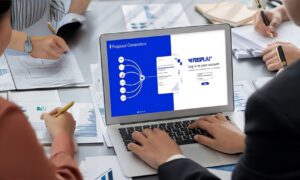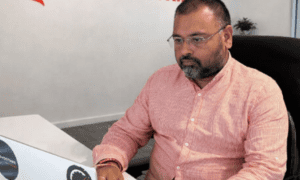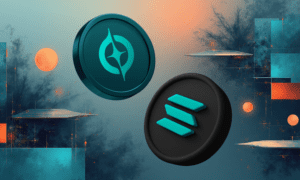Fostering a Growth Mindset: Effective Practices from Business Leaders
Discover effective practices for fostering a growth mindset in your business, backed by insights from industry leaders. This article explores practical strategies that successful companies use to cultivate continuous learning and development within their teams. From collaborative workshops to innovative feedback sessions, these expert-approved techniques can help transform your organization’s approach to personal and professional growth.
- Collaborative Workshops Boost Confidence and Growth
- Regular Team Meetings Foster Shared Development
- Peer-Led Industry Guilds Encourage Continuous Learning
- Reverse Learning Sessions Empower All Team Members
- Failure to Fuel Debriefs Transform Setbacks
- Internal Knowledge Base Drives Collaborative Growth
- Weekly Experiments Cultivate Risk-Taking Culture
- Create Safe Environment for Learning and Failure
- Reflective Feedback Sessions Promote Continuous Improvement
- Micro-Moments of Recognition Encourage Daily Growth
- Learning Sprints Turn Failures into Future Success
- Challenge Sessions Foster Vulnerability and Shared Learning
- Weekly Learning Sprints Tie Development to Outcomes
- Customer-Centric Approach Drives Team Growth
- Cross-Disciplinary Growth Labs Tackle Real-World Problems
- Debrief Loop Normalizes Failure as Learning
- Hands-On Challenges Build Problem-Solving Skills
- Weekly Learnings Share Curiosity and Openness
Collaborative Workshops Boost Confidence and Growth
We have found a recipe for growth that has worked well for us over the years. At its core is the belief that progress is born from collaborative learning and confidence-enhancing techniques.
We periodically run public speaking workshops, which bring together people from multiple teams and departments, of varying experience levels. This includes our new apprentices as well as our senior apprentice alumni – and with 50% of them now in senior management roles, it allows employees to see the potential growth opportunities.
The workshop runs over 3 days and covers foundational communication principles, personal feedback, and peer-reviewed presentations. On the final day, our CEO drops in and personally celebrates the courage and effort displayed by the presenters.
These workshops act not only as networking events, but our post-course surveys show a boost in confidence and a surge in volunteers to join the next workshop – which demonstrates how effective the course is in reframing challenges as opportunities for development, rather than threats.
Tracey Beveridge, HR Director, Personnel Checks
Regular Team Meetings Foster Shared Development
I’ve found that one of the most effective ways to cultivate a growth mindset within my teams is through regular, structured meetings where everyone shares ideas, reflects on wins, challenges, and key lessons learned. These sessions align the team, keep us grounded in both successes and failures, and help us stay agile. We consistently review our goals and the steps we’re taking to achieve them. When change is needed, we make it a priority to communicate clearly with the team, encouraging open dialogue, diverse perspectives, and constructive criticism. Growth is a shared journey, and when each person takes part in that process, they’re empowered to grow alongside the business.
Michael Podolsky, Co-Founder and CEO, PissedConsumer.com
Peer-Led Industry Guilds Encourage Continuous Learning
We’ve fostered a growth mindset by embedding learning directly into our workflows and team culture. One practice that’s been especially effective is our internal “Industry Guild” series. These are peer-led sessions where team members present on new technologies, recent challenges they’ve solved, or lessons from client projects.
What makes this powerful is that it’s not top-down learning but collaborative and practical. Employees are encouraged to not only consume knowledge but also share it, which reinforces learning and builds confidence. It also normalizes curiosity and experimentation, showing that development is an ongoing process, not just a formal training event.
Sergiy Fitsak, Managing Director, Fintech Expert, Softjourn
Reverse Learning Sessions Empower All Team Members
Fostering a growth mindset among my team has always been central to our success in the ever-evolving world of legal marketing and SEO. In this industry, where algorithms and best practices can change overnight, adaptability and a willingness to learn are crucial. One activity that’s been particularly effective is our “Reverse Learning Sessions.”
In these sessions, less-experienced team members or those newer to a specific topic lead short workshops for the rest of the team, including senior staff and myself. The subjects range from emerging social media trends to new SEO tools and even creative outreach strategies. This practice flips the traditional top-down learning model, empowering everyone to explore new ideas and share insights without the pressure of established hierarchy.
Not only does this help junior team members build confidence and communication skills, but it also encourages our more seasoned staff to stay open-minded and receptive to fresh perspectives. It’s remarkable how often a new set of eyes uncovers unique angles or solutions that might have otherwise gone unnoticed. After each session, we hold a collaborative review, where constructive feedback is encouraged and celebrated, reinforcing that mistakes and questions are simply steps toward mastery.
Ultimately, this ongoing practice has cemented a culture where everyone feels comfortable embracing challenges, seeking feedback, and continuously expanding their expertise. In an environment as dynamic as legal SEO, that willingness to learn and adapt—at every level—has proven invaluable.
Jason Bland, Co-Founder, Custom Legal Marketing
Failure to Fuel Debriefs Transform Setbacks
We treat a growth mindset as a cultural foundation, not a one-time initiative. It’s embedded in how we lead, coach, and communicate, starting from the top.
One of our most effective tools is the “Failure to Fuel” debrief. After a project or challenge, teams reflect on three questions: What happened? What did we learn? How will we apply it? This simple practice transforms setbacks into learning opportunities and encourages risk-taking without fear of blame.
Leadership plays a critical role. I regularly share my own failures and growth lessons to model vulnerability. When leaders are open about their development, it gives everyone else permission to do the same and reinforces that growth isn’t limited to junior employees.
We also have a system of quarterly learning goals that are separate from performance metrics. These are supported by peer coaching and regular check-ins, making development a shared responsibility rather than just an HR function.
The outcome is higher engagement, more creativity, and teams that take ownership of their growth. A growth mindset culture isn’t just about learning new skills. It’s about creating an environment where curiosity, reflection, and resilience are part of daily work.
Rhett Power, CEO and Co-founder, Accountability Inc.
Internal Knowledge Base Drives Collaborative Growth
Fostering a growth mindset among my team has been an ongoing priority as a CEO. One approach that has worked exceptionally well for us is creating an internal knowledge-sharing culture.
A few years ago, our team faced significant challenges with siloed information. Knowledge was scattered across emails, Slack threads, and shared drives, which made collaboration slow and inefficient. To tackle this, I introduced an internal knowledge base using a simple, all-in-one platform. However, instead of forcing a new process from the top down, I invited each department to contribute their expertise and document their workflows. This way, the platform became a collaborative space built by the team, for the team.
The results were incredible. Teams began solving problems independently, communication across departments improved, and new hires adapted much faster. That shift wasn’t just about streamlining productivity; it was about empowering people to take ownership of their growth and learning. For me, knowledge-sharing isn’t just a tool for efficiency. It’s a mindset that encourages curiosity, collaboration, and the belief that we’re all capable of learning and improving every day.
Gauri Manglik, CEO and Co-Founder, Instrumentl
Weekly Experiments Cultivate Risk-Taking Culture
One thing that has helped us build a real growth mindset on the team is making space for small experiments, even the ones that fail. Every week, we conduct a quick round where people share one thing they tried, not just one thing they succeeded at. It could be testing a new tool, changing a process, or even just reworking a subject line. The point is to discuss what we’re learning, not just what we’re excelling at.
It has made a significant difference. People feel more comfortable taking risks because they know trying something new is part of the job, not something extra. And honestly, once a few people start sharing lessons like that, it spreads. Now we have a team that brings ideas forward without waiting to be asked, which is exactly what we want.
Matias Rodsevich, Founder & CEO, PRLab
Create Safe Environment for Learning and Failure
Fostering a growth mindset isn’t about handing out motivational posters or buzzwords. It’s about creating a culture where people feel safe to try, fail, and try again. One of the most effective things we’ve done is to treat learning as part of the job, not a bonus. We challenge how we think and talk openly about what’s not working. Growth comes when people stop being afraid of getting it wrong.
Bradley Keenan, Founder and CEO, DSMN8
Reflective Feedback Sessions Promote Continuous Improvement
Fostering a growth mindset is embedded in how we approach professional development. One practice that has been particularly effective is our commitment to regular, reflective feedback sessions—not just annual reviews. These sessions focus on learning over performance, encouraging employees to view challenges as opportunities to grow rather than setbacks.
We also promote a culture where asking questions, experimenting with new tools, and sharing lessons learned is not just accepted but celebrated. By creating a psychologically safe environment where curiosity is valued, our team feels empowered to try, fail, and improve—ultimately driving both individual development and business innovation.
Lawrence Harmer, Founder & Director, Solve
Micro-Moments of Recognition Encourage Daily Growth
One of the most effective ways we’ve fostered a growth mindset is through small, often unexpected acknowledgments of individual effort. While we still celebrate major milestones, like end-of-quarter wins, successful project completions, and industry award nominations, we’ve intentionally shifted focus toward more frequent, informal moments of recognition between leadership and team members.
These micro-moments of praise have proven to be incredibly powerful. Unlike large, orchestrated celebrations, which can sometimes come across as performative, small gestures feel more authentic. A quick note of appreciation, a thoughtful comment during a check-in, or a casual “Well done” mirrors how encouragement happens in real life. It feels personal, genuine, and timely.
Overemphasizing big wins can have unintended consequences. If recognition only comes at the finish line, team members may feel overlooked during the long stretches of hard, often invisible work. That’s when motivation and a drive to improve tend to falter.
By consistently highlighting growth, effort, and skill development in real time, without ceremony, we reinforce the message that progress is valued every day, not just at the end of a project or contract. This simple but intentional practice helps keep our team engaged and always looking to do better.
Megan Mooney, Managing Partner, Vetted
Learning Sprints Turn Failures into Future Success
One way in which leaders can successfully foster a growth mindset within their team is to implement a culture of reflection and learning. We try to organize a learning sprint every quarter, or whenever necessary, in order to motivate our employees to think outside the box.
We structure these learning sprints by using our “failures” as the starting point for brainstorming how processes can be improved, or which new features can be added to our products. Seeing which challenges we’ve faced in the past can be a true indicator of where to improve in the future. We consider what we have learned, or can learn from our failures, and what has or hasn’t worked so far. These prompts hold the power to steer the company’s future in the right direction and drive real growth.
Another practice that can truly be effective is having a “failure” wall. For a while, we encouraged team members to write down the challenges they experienced on a small Post-It note, and stick it to the wall after each sprint. This note was also accompanied by a note explaining the lesson each team member learned. This proved to be such a powerful way to celebrate the insights we gained after every misstep. It helped our team stop fearing being wrong, and just try their best to be as curious as possible. Over time, we saw that our “failure” wall was not a failure at all; it boosted the creativity within our company and highlighted the learning that had taken place.
Alex Sarellas, Managing Partner & CEO, PAJ GPS
Challenge Sessions Foster Vulnerability and Shared Learning
Fostering a growth mindset isn’t just a concept; it’s embedded in our culture. One practice that’s been particularly effective is our “Challenge Sessions.” Every week, team members present a problem they’ve encountered, and we work through it together regardless of role or seniority. This not only encourages vulnerability and shared learning but also reinforces that growth comes from embracing challenges, not avoiding them. It’s helped create an environment where experimentation is safe and learning is continuous.
Yuying Deng, CEO, Esevel
Weekly Learning Sprints Tie Development to Outcomes
I transformed performance reviews into weekly learning sprints.
Every Monday, the team selects one area they want to improve in, such as SEO strategy, technical audits, or AI tools, and shares what they learned by Friday.
This approach keeps development continuous, not reactive, and directly ties learning to client outcomes.
It has been successful because the wins are quick, visible, and peer-led, rather than top-down.
One team member progressed from entry-level to managing enterprise audits in six months due to this system.
The key is to remove the pressure of “getting it right” and shift the focus to “getting better every week”.
Callum Gracie, Founder, Otto Media
Customer-Centric Approach Drives Team Growth
When building their teams from scratch, a team leader’s primary objectives are instilling a growth mindset and pushing the boundaries to reach success. I’ve built four different products and marketing teams in my career, and the only way I bring a positive growth mindset among employees is by making them follow a customer-centric approach.
From what I’ve understood in the corporate world, the more you care about your customers, the better their loyalty will be to your products. Right from the start, our employees were instructed to interact with as many people as they could, deriving insights about their sleep preferences, pain points, and subsequent challenges due to poor sleep. With data from approximately 10 million sleepers, our product teams built the ultimate prototype, which would go on to become our signature mattresses.
For a positive growth mindset, analyzing the customers’ opinions, finding patterns, and designing accordingly helped our sales skyrocket. We played a little game of talking to 10 strangers about their sleep issues, and everyone (including me) would share the survey results in our team meetings. Some strangers helped us, some shooed us away. However, more customer interactions and efforts helped us design products that brought both fame and revenue to the company.
So, the bottom line is, if you value your customers and keep their preferences first, you’ve already got a growth mindset to excel in every part of your career.
Jonathan Moore, Marketing & Ecommerce Director,, Simba Sleep
Cross-Disciplinary Growth Labs Tackle Real-World Problems
Fostering a growth mindset is more than a slogan; it sits at the very center of our day-to-day decision-making. Our employees regularly participate in what we call Growth Labs, cross-disciplinary huddles that tackle real-world problems, even if those problems lie outside their immediate job descriptions. These workshops generate fresh ideas while giving participants the chance to experiment and acquire practical skills without exposure to high stakes.
Constant, informal feedback keeps the experience grounded and allows our people to reshape insights into concrete improvements almost on the spot. By normalizing setbacks as a natural ingredient of learning and publicly recognizing small wins, we’ve cultivated a culture where employees feel confident to experiment, adjust, and ultimately succeed even when challenges arise.
Clay Plowman, Executive Vice President, InCorp
Debrief Loop Normalizes Failure as Learning
Fostering a growth mindset begins with creating a culture where learning is viewed as a strategic advantage, not a personal deficiency. One of the most effective practices I’ve implemented is something I call “The Debrief Loop”: a short, structured post-project reflection that encourages employees — including leaders — to share not just what went well, but also what they would do differently next time.
By normalizing failure as part of the learning process and rewarding vulnerability with curiosity (not consequences), we created a psychologically safe environment where experimentation was welcomed. Over time, this practice helped shift the organizational narrative from, “Did I get it right?” to, “What did I learn?” — which is the essence of a true growth mindset.
Julie Catalano, Chief People Officer
Hands-On Challenges Build Problem-Solving Skills
Most people say they want growth, but few build the habits to support it. I focus on making growth part of the daily work, not something extra. That means giving employees chances to lead, problem-solve, and own their mistakes without fear. If your crew is always worried about being wrong, they won’t try something new. Growth stops the second fear walks in.
One method that works is our weekly hands-on challenge. I set up a mock installation or repair with a twist, something unexpected, like outdated fittings or a space constraint. Then a junior technician takes the lead while a senior technician observes. No interventions unless safety is at risk. Afterward, we break it down together. What worked, what didn’t, what they’d try next time. The team learns more in that one session than they would in hours of passive training.
We also keep a shared notebook on the shop floor. Every technician writes down one thing they learned on a job each week. It doesn’t matter how small. It could be about a specific fitting, a better way to talk to a client, or a shortcut for organizing the truck. Reviewing that as a group has sparked real discussions and new practices.
Growth isn’t about slogans or posters in the break room. It’s about building systems that reward curiosity and consistency. That’s what gets results.
Gary Bregani, Owner, Willowbrook Plumbing & Heating
Weekly Learnings Share Curiosity and Openness
Running an SEO agency and an AI tools company means constant change: new platforms, algorithms, and features – it never stops. Early on, I realized if my team felt they had to “get it right the first time,” they’d either burn out or stop trying new things. So we made curiosity a core part of our culture. Wins are great, but we also celebrate experiments, especially the ones that didn’t work out but taught us something useful.
We do something simple but powerful called “Weekly Learnings.” Every Friday, one person from the team shares one thing they learned that week. It could be a campaign that flopped and why, a new SEO tactic, or even a small automation trick in an AI tool. It’s not about being the smartest in the room; it’s about staying open, staying curious, and showing that learning is part of the job, not a side project. Over time, it’s helped build a team that isn’t afraid to try, fail, and grow.
Mayank Sahu, Chairman, Prompts99
Related Articles
- Effective Performance Management Drives Business Growth and Team
- The Role of Leadership in Promoting a Culture of … – TechBullion
- Managing Cash Flow: Strategies for Business Growth

































